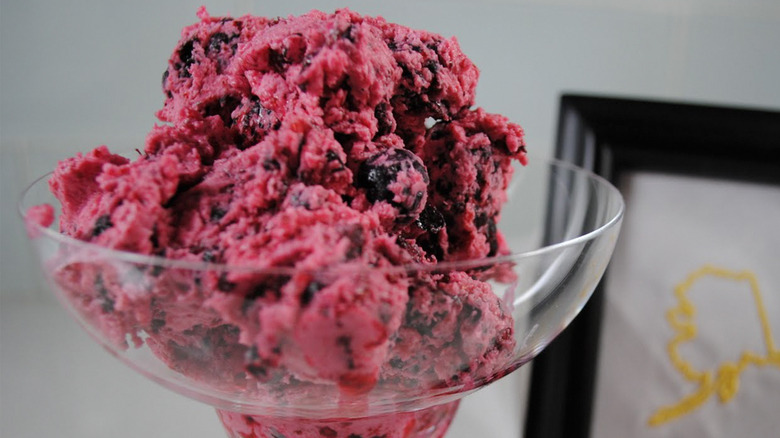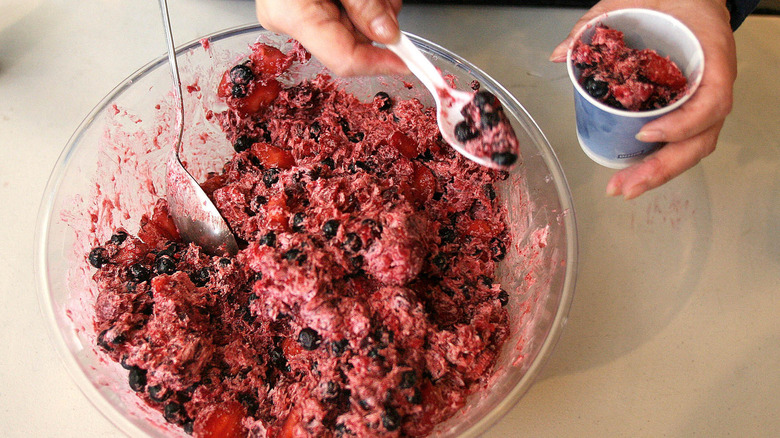The Ancient Origins Of Alaska's Traditional Akutaq Ice Cream
When most people think of ice cream, they imagine a sweet treat. Akutaq is a different kind of frozen delicacy. The recipe is credited to indigenous people of Alaska, and the food was sustenance for long excursions into cold, harsh climates (via Matador Network). The unique dish is also served at celebrations, according to Taste Atlas, and can be eaten as a snack.
The season's first batch of akutaq was typically made after a polar bear or seal was caught; women would prepare the dish using regional ingredients and follow recipes passed down from previous generations (via What's Cooking America). Families would make akutaq according to their own preferences, and children would watch for the signal that it was time to eat: a piece of the mixture would be thrown into a fire (per University of Alaska at Fairbanks). Akutaq, Yupik meaning "mix them together," does just that: meat, fat, fish, oil, berries, and ice are whipped together in one bowl (via Matador Network). But where and how this mixture came about isn't entirely clear.
A food for expeditions and celebrations
Arctic food history researcher Zona Spray Starks points out that since the recipe wasn't passed down by any written form, it is challenging to pin down exact origins. The many versions of akutaq have been adjusted according to need; for protein-packed variations, dried meat replaced berries to yield a frozen pâté that could be cut into hardy pieces and distributed on arctic journeys. How akutaq was made would largely depend on the cook's preferences, available ingredients, and the current season; in Alaska's northern regions, for instance, bear, seal, and whale were commonly found in akutaq batches, while in inland communities, recipes would include caribou or freshwater fish (via Smithsonian Magazine).
"Some people add potatoes for fluff. Some people add milk," Yupik Kelsey Wallace instructed from the Alaska Native Heritage Center in Anchorage. Wallace admits the concoction might not sound appetizing to everyone, but asserts the dish is delicious (via KUOW). We suppose the long history of akutaq serves as a kind of social proof.

